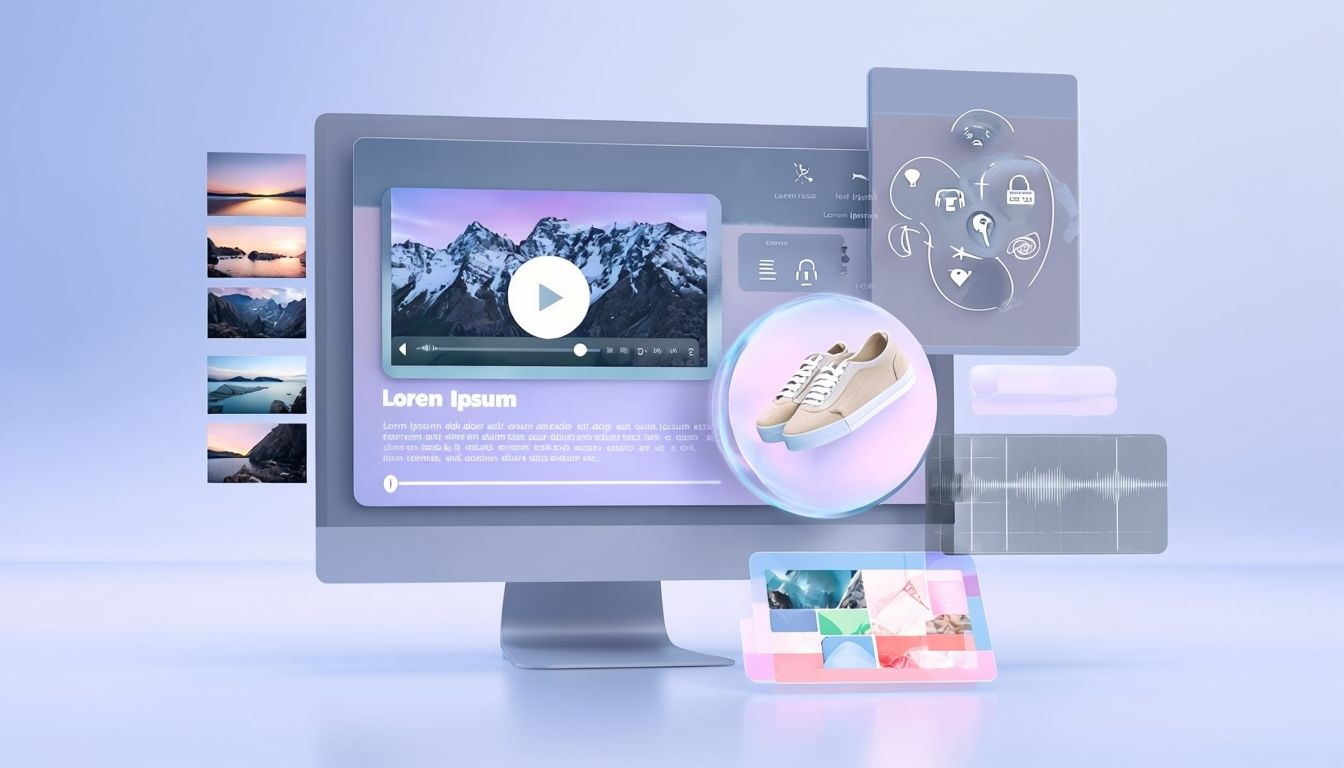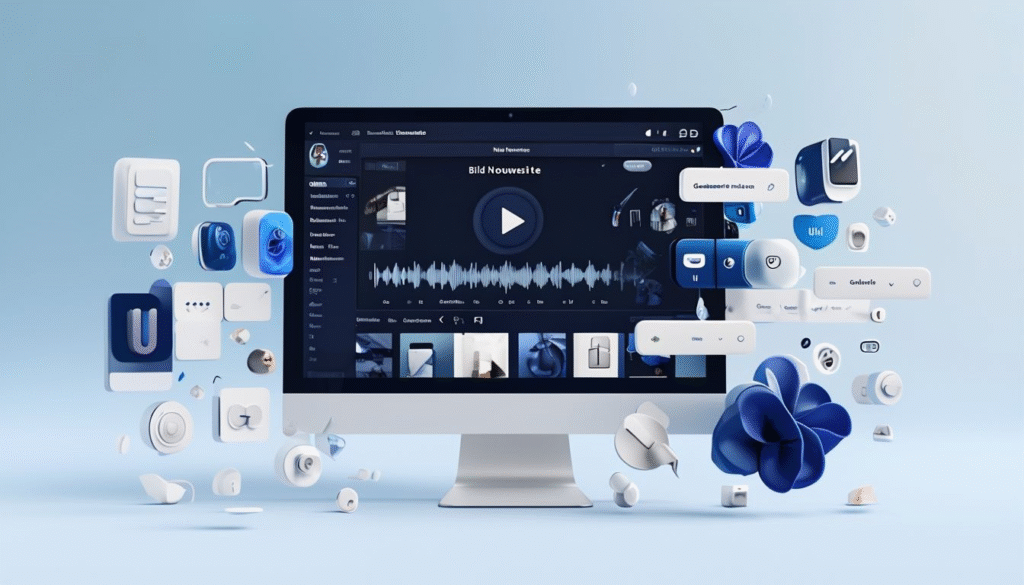
In today’s digital landscape, multimedia is no longer a luxury, it’s an essential element of compelling user experiences. From dynamic visuals to immersive sound, integrating multimedia elements on your website can significantly boost engagement, accessibility, and retention.

At Plutonic Services, we work with startups and enterprises to build future-ready websites and apps that harness the power of multimedia. Here’s how your business can stay ahead of the curve in 2025:
1. Improved Engagement Through Interactive Visuals
Static websites are becoming obsolete. Users expect movement, interactivity, and real-time feedback. Incorporating videos, animations, carousels, and scroll-based effects keeps users engaged and encourages them to explore more content.
Use Cases:
- Product reveal animations
- Interactive tutorials or walkthroughs
- Dynamic infographics that respond to user input
2. Enhanced Storytelling with Video Content
Video is one of the most powerful mediums to convey emotion, story, and value. A well-crafted video can replace paragraphs of text while creating an emotional connection with your visitors.
Use Cases:
- Brand story videos on homepages
- Customer testimonials
- Background videos for immersive headers
3. Boosting Accessibility with Audio and Voice
Adding audio descriptions, voice commands, and background sound can make your website more inclusive. This not only enhances the UX for visually impaired users but also aligns with growing voice-search trends.
Use Cases:
- Voice-enabled search
- Audio explanations of complex topics
- Background music for mood setting (with user controls)
4. Increased Time-on-Site via Gamification Elements
Gamification is about using fun, multimedia-driven interactions to make user journeys more enjoyable. When users are rewarded with animation, sound, or visuals, they are more likely to stay longer.
Use Cases:
- Spin-the-wheel rewards
- Interactive quizzes with animated feedback
- Progress bars with milestone animations
5. Responsive Design with Adaptive Media
Multimedia isn’t just about ‘adding’ features – it’s about delivering the right media based on device, connection speed, and user behavior. In 2025, adaptive content delivery is critical.
Use Cases:
- Auto-compressing images and videos based on bandwidth
- Mobile-first animations
- Lazy-loading of large media elements
6. Better SEO and Retention with Rich Media Content
Google’s algorithms increasingly favor websites with rich, multimedia-enhanced content. Pages that include video, image carousels, audio, and interactive features rank better and see lower bounce rates.
Use Cases:
- Product pages with demo videos
- Blog posts with embedded audio clips
- Tutorials with step-by-step video guides
7. Stronger Emotional Impact and Brand Recall
Multimedia allows you to communicate your brand identity and values more effectively. When done right, visuals and sound can form long-lasting emotional connections with your audience.
Use Cases:
- Signature brand sounds or audio logos
- Onboarding videos with consistent tone
- Visual storytelling of customer success stories
Final Thoughts
Web development in 2025 is as much about storytelling and interaction as it is about speed and functionality. Multimedia integration bridges the gap between performance and personality.
If your website isn’t yet multimedia-ready, it may be time to rethink your digital strategy. At Plutonic, we help businesses create immersive, user-friendly platforms tailored to their audience.
Need help integrating multimedia into your website? Explore our past projects here or let’s talk about how we can future-proof your user experience.


